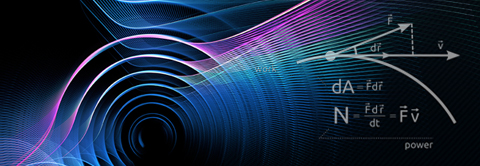| 날짜 | 2022-05-13 14:30 |
|---|---|
| 일시 | May. 13 (Fri.), 02:30 PM |
| 장소 | Zoom webinar |
| 연사 | Dr. Kun-Rok Jeon(Department of Physics, Chung-Ang University) |
SRC Seminar
“Topological Superconducting Spintronics Towards Zero-Power Computing Technologies”
Dr. Kun-Rok Jeon
Department of Physics, Chung-Ang University
May. 13 (Fri.), 02:30 PM
https://kaist.zoom.us/j/88323922428
회의 ID: 883 2392 2428
암호: 839974
Abstract:
Semiconductor (SC) spintronics [1-4] aims to integrate memory and logic functions into a single device. Ferromagnetic tunnel contacts have emerged as a robust and technically viable method to inject spin current into a SC up to room temperature, and to detect it [3-7]. Intriguingly, it has been established that the spin current in ferromagnetic tunnel contacts can be created by thermal means (driven by a heat flow), namely Seebeck spin tunneling [8]. So far, the creation of thermal spin current relies on the spin-dependent energy dispersion of electronic states around the Fermi energy (EF), which determines thermoelectric properties. In the first part of my talk, I will describe a conceptually new approach to tailor the thermal spin current in ferromagnetic tunnel contacts to SCs exploiting spin-dependent thermoelectric properties away from EF through the application of a bias voltage across the tunnel contact [9,10].
Combining superconductivity with spintronics brings in a variety of notable phenomena which do not exist in the normal state, for instance quantum coherence, superconducting exchange coupling and spin-polarized triplet supercurrents [11,12]. This nascent field of superconducting spintronics promises to realize zero-energy-dissipation spin transfer and magnetization switching. Recent equilibrium (zero-bias) studies of the Josephson effect in S/FM/S (FM: ferromagnet; S: Superconductor) junctions and the critical temperature Tc modulation in FM/S/FM and S/FM/FM' superconducting spin valves have demonstrated that engineered magnetically-inhomogeneous S/FM interfaces can generate long-range triplet pairing states which explicitly carry spin [11,12]. However, direct measurement of triplet spin transport through a singlet S has not so far been achieved. In the second part, I will describe an essentially different approach, namely, a time-dependent ferromagnetic magnetization [ferromagnetic resonance (FMR)] can drive spin-polarized transport in a singlet S via spin-triplet states induced by spin-orbit coupling [13,14].
If time permits, I will briefly outline outstanding technical issues for the realization of energy-efficient (or even dissipation-less) spintronic technologies and present my research direction of how to address these issues via topology physics [15,16].
Reference: [1] Rev. Mod. Phys. 80, 1517 (2008), [2] Rev. Mod. Phys. 76, 323 (2004), [3] Nat. Mater. 11, 400 (2012), [4] Semicond. Sci. Technol. 27, 083001 (2012), [5] Nature 462, 491 (2009), [6] Appl. Phys. Express 4, 023003 (2011), [7] Phys. Rev. Appl. 2, 034005 (2014), [8] Nature 475, 82 (2011), [9] Nat. Mater. 13, 360 (2014), [10] Phys. Rev. B 91, 155305 (2015), [11] Nat. Phys. 11, 307 (2015), [12] Rep. Prog. Phys. 78, 104501 (2015), [13] Nat. Mater. 17, 499 (2018), [14] Phys. Rev. X 10, 031020 (2020), [15] Nat. Mater. 20, 1358 (2021), [16] Under review in Nat. Nanotech. (2022).
Contact: SunYoung Choi, (sun.0@kaist.ac.kr)
Center for Quantum Coherence in Condensed Matter, KAIST







